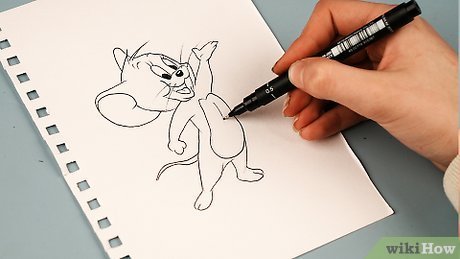How To Draw
1. Gathering Materials
- Pencils: Use a range of pencils from hard (H) to soft (B). H pencils are good for light lines, while B pencils are better for darker, softer lines.
- Erasers: A kneaded eraser is versatile for lifting graphite and creating highlights. A rubber eraser is good for cleaning up larger areas.
- Paper: Use smooth paper for detailed work and textured paper for more expressive strokes.
- Pens/Markers: If you plan to add ink details or color, choose pens and markers based on the effects you want.
2. Starting with Basic Shapes
- Sketch Lightly: Use a light hand when drawing basic shapes to make it easier to erase later.
- Use Guidelines: Draw lightly to outline the basic proportions and structure. For example, if drawing a face, sketch a circle for the head and guidelines for the eyes, nose, and mouth positions.
3. Adding Details
- Facial Features: For a face, place the eyes about halfway down the head, the nose about halfway between the eyes and chin, and the mouth about a third of the way down from the nose.
- Body Proportions: Use the “head count” method. For example, a human body is roughly 7-8 heads tall. Adjust the proportions according to the pose and perspective.
- Texture and Patterns: Add details such as hair texture, clothing folds, or background elements.
4. Refining Your Drawing
- Line Work: Go over your lines with a darker pencil or pen, refining the shapes and details.
- Erase Guidelines: Carefully erase any unnecessary guidelines and sketch marks without disturbing the main lines.
- Adjust Proportions: If something looks off, adjust it gradually. Don’t be afraid to make changes.
5. Practicing Shading
- Understand Light Source: Identify where your light source is coming from to create shadows and highlights.
- Shading Techniques:
- Hatching: Draw parallel lines to create shadow. The closer the lines, the darker the area appears.
- Cross-Hatching: Layer intersecting lines to build up darker areas.
- Blending: Use a blending stump or your finger to smooth out shading for a more gradual transition.
6. Experimenting with Styles
- Study Artists: Look at different artists’ work to understand various styles and techniques.
- Try Different Mediums: Experiment with colored pencils, pastels, charcoal, or digital tools.
- Incorporate Personal Touches: Develop your style by adding unique elements or techniques that you enjoy.
7. Regular Practice
- Draw Daily: Set aside time each day to draw, even if it’s just a quick sketch.
- Keep a Sketchbook: Document your progress and ideas in a sketchbook. This will help you track improvement and experiment freely.
- Seek Feedback: Share your work with others for constructive criticism and encouragement.














Post Comment